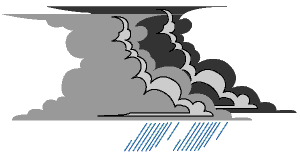 |
||||||||
| Issue Number 223 |
January
1998
|
|||||||
|
P.O. Box 189, Moffett Field, CA 94035-0189 |
||||||||
|
|
||||||||
 |
||||||||
| Issue Number 223 |
January
1998
|
|||||||
|
P.O. Box 189, Moffett Field, CA 94035-0189 |
||||||||
|
|
||||||||
![]()
Even with adequate supplementary lighting, flight crews need to allow an extra margin for error to accommodate the reduction in visual perception that occurs at night. An air carrier First Officer reports that on a well-lit ramp, the crew's perception of the available parking space was still faulty:
The crew had NOTAMs indicating that the taxiway route was not safe for that size aircraft, and airport charts indicating maximum wingspan and tail height for clearance under the bridge. The reporter's recognition that "we were getting very close" should have caused the crew to stop and question Ramp Control's instructions.
Altered visual perception at night may be even more troublesome in flight, where a third dimension - altitude - adds to the potential for misinterpretation of the visual cues. An air carrier Captain credits TCAS with accurately "seeing" conflicting traffic when the crew could not.
At night, it is easy to misjudge the altitude and distance of closing aircraft. TCAS II is an excellent resource that can aid in determining aircraft position and rate of closure. However, pilots should also remember to ask ATC for specific assistance with aircraft separation. Brief queries directed to ATC - "Can you keep us informed on spacing?" or "What's the altitude of our traffic?" - can help illuminate the traffic picture.

The reports will be grouped according to frequently requested database search topics. This new offering is intended to bring ASRS data to a wider user community, and to provide recent report samples relevant to users' training and operational activities.
Each report group (report "set") will consist of 50 recent ASRS database reports that have been pre-screened to assure their relevance to the pre-selected topic description. They will be formatted for downloading into RTF (Rich Text Format), which can be read by most word processing applications and by many other programs, including spreadsheets.
The reports sets will be
updated quarterly. New topics will be added - and outdated topics removed
- in response to input from the ASRS user community, and analysis of
Web site usage. Following is a preliminary listing of the report topics
that will be available in January 1998:
![]()
Two General Aviation pilots report on their challenging encounters with simultaneous IMC and mechanical difficulties. The first reporter was well-prepared with good back-up equipment.

In this case, limited communication and navigation equipment provided the reporter with enough information to relay his problems to ATC and land safely. In instances where a failure occurs shortly after take-off, an immediate return-to-land is an option that should be considered.
The next reporter was less prepared - in knowledge of FARs - to make a decision about accepting an IFR clearance when the weather took a turn for the worse.
It was the pilot's responsibility - not the Controller's-to determine the legality of IFR flight. The situation could have been avoided if the reporter had executed a 180° turn at the first sign of deteriorating weather.

That's where an air carrier Captain found himself, with the rock being conflicting traffic, and the hard place being thunderstorm cells.
Part of attempting to declare an emergency should include squawking 7700. This immediately notifies ATC of a problem, at which time the Controller will be alerted that the flight crew needs to make a request.
Another Captain in a similar "hard place" deviated without any attempt at ATC contact. The First Officer reports:
Course deviations beyond the boundaries of an airway may cause ATC to consider an aircraft lost, or worse, a national security threat.
|
|
|---|
| In-flight deployment of escape slide on a B-757-200 |
| BE35 ruddervator attachment tabs and cables failure |
| Fire hazard in a B-767 cabin video entertainment unit |
| Localizer deflection caused by taxiing widebody aircraft |
| Confusion over "fly direct" clearances in foreign airspace |
|
|
|
|---|---|
|
Air
Carrier Pilots
|
1,837
|
|
General
Aviation Pilots
|
589
|
|
Controllers
|
68
|
|
Cabin/Mechanics/Military/Other
|
68
|
|
TOTAL
|
2,562
|